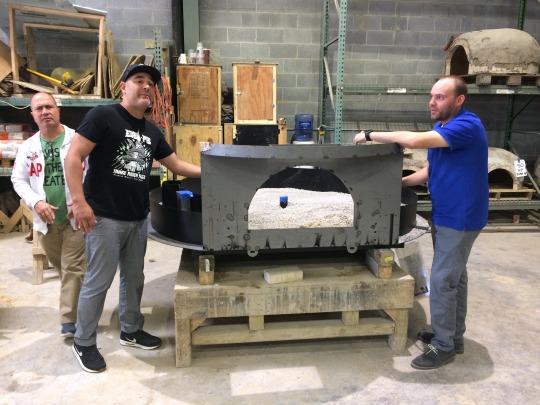
Pizza people know how to party. Back in September, the MGM National Harbor resort hosted and event called Pizzapalooza, in which pizzaioli from around the world were brought in to showcase their work in a food festival setting. It was amazing and I was honored to work alongside my mentor John Arena, of Metro Pizza in Las Vegas. Since I was already down in the DC area, I decided to call my homeslice Anthony Pilla (blue shirt in above photo) over at Marra Forni ovens to ask about scoring a tour of their manufacturing facility in Maryland. Not only was he excited to host some visiting pizza makers, he was thrilled to tell me that we’d all be cooking in Marra Forni ovens at the event! After cooking on these amazing ovens for hundreds of Pizzapalooza attendees, Vincent Rotolo (black shirt above, owner of Good Pie in Las Vegas) and John Arena (white jacket) joined me for a tour of their birthplace.
Marra Forni wasn’t making ovens when they went into business 10 years ago, but now they’re one of the fastest growing manufacturers in the county. It all started with the Marra brothers launched went into business back in 2007, importing Italian food and brick ovens. It only took a year before they realized importing ovens wasn’t the smartest way to operate. They started importing raw materials and constructing the ovens on site at their facility in Maryland in 2008. Now they’re pumping out 400-500 ovens per year, each of which is handmade.
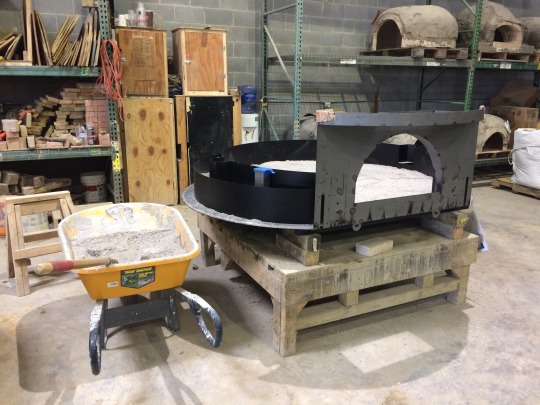
The process begins with a stainless steel frame, which is fabricated in-house. Marra offers a few different sizes and models, but all of their current oven products are of the Neapolitan wood-fired style, which means a round base and dome top.
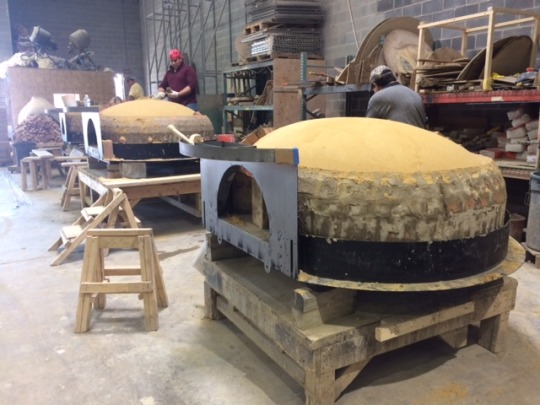
A mound of sand provides support for the bricks and insulation that will ensure the oven ceiling’s heat-retention and radiation capacity. Marra’s volcanic pumice, salt, sand, cement, and bricks all come from Italy.
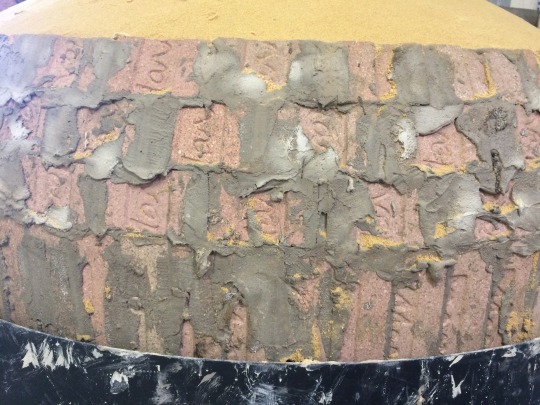
Bricks are cut by hand to fit the oven’s dome and cemented in place over the sand. Somewhere around six people are involved in the process of building each oven, which takes about 6-8 weeks to construct.
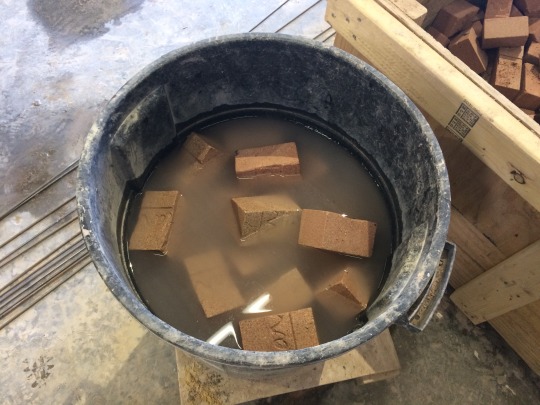
Leftover brick pieces are soaked and crushed to be used in other parts of the production process.
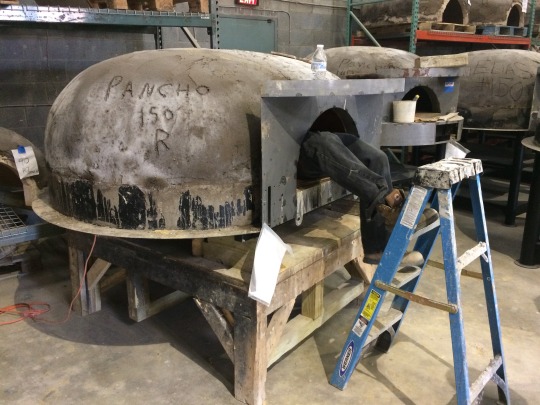
Cement seals the brick interior and the artisan overseeing the process writes his name and the oven model. This is a 150R, their largest rotator oven. This is a quality control step so Marra can trace back any problems that might come up along the way. They’re still a new company, so a small mistake could easily turn into a big problem.
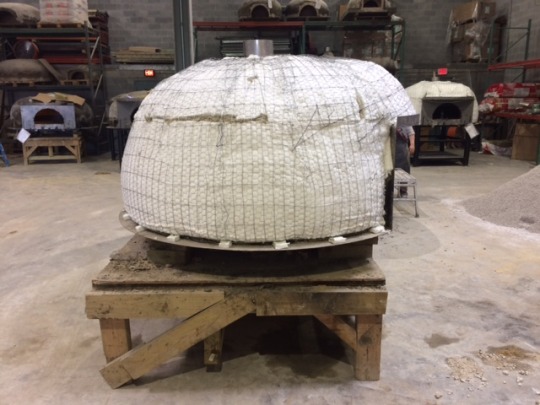
Insulation comes next. This stuff is rated for 3,000 degrees F, so the oven’s outer surface is never a safety hazard. It also helps keep the oven extremely efficient. Gas-burning models clock in around 84k BTUs while the industry standard is 160-220k. Marra ovens can achieve the same high temperatures as higher BTU ovens without burning as much fuel.
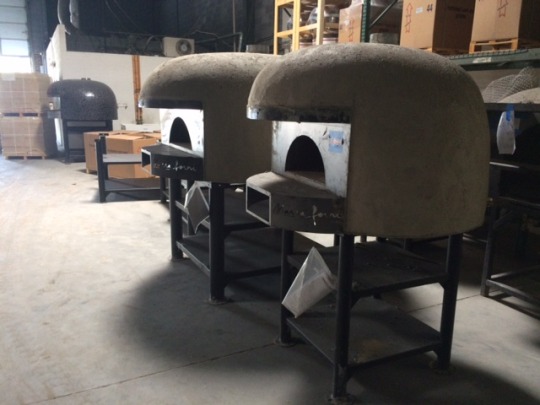
A final layer of imported cement leaves a smooth surface for decoration. Some customers want the raw treatment but most opt for tile finishes. Pizzerias can choose from stock or custom designs. Rotator and gas-fueled ovens also get American-made touchscreen controls that use software designed in-house. We saw these things in action at the Marra Forni test kitchen and it was impressive how quickly temperature can be changed.
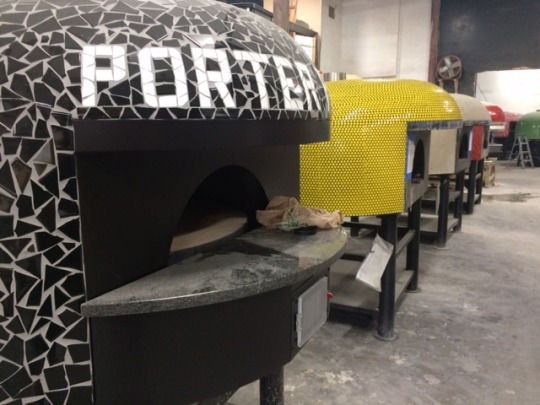
Anthony showed us every step of the process and we all came out with an understanding of why Marra Forni has become such a strong force in the pizza industry in such a short period of time.

